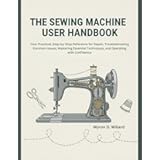Unlock Your Style Potential: Genius DIY Fashion Hacks for Every Wardrobe Challenge
Did you know that an estimated 85% of all textiles go to landfills each year, with a significant portion being perfectly salvageable clothing? It’s a staggering figure that highlights a common dilemma: what do you do with clothes that are “TOO BIG!” or “TOO LONG!” or even bear an unfortunate “BLEACH STAIN?” The video above by Crafty Panda brilliantly demonstrates that these common fashion woes are not dead ends, but rather exciting opportunities for creative reinvention. These ingenious fashion hacks empower you to transform your existing wardrobe, saving money and reducing waste while unleashing your personal style.
No longer must ill-fitting garments gather dust or stained favorites face the discard pile. We explore an array of transformative DIY clothes ideas, from simple adjustments to radical upcycling projects. Ready to infuse new life into your closet?
1. Breathing New Life into Ill-Fitting Garments
One of the most frequent complaints about clothing is fit. Whether an item is brand new or a beloved vintage find, encountering something “TOO BIG!” or “TOO LONG!” often leads to frustration. However, with a few simple DIY tricks, you can tailor garments to perfectly suit your body and aesthetic preferences.
T-Shirt Transformations: From Oversized to Ooh-La-La
The video highlights “3 FASHION HACKS FROM OLD T-SHIRTS,” showcasing the incredible versatility of this common wardrobe staple. An oversized tee, for instance, offers a canvas for various styles. You actively create a cropped look by simply cutting and knotting the bottom, or convert it into a stylish off-shoulder top by widening the neckline. For a more fitted silhouette, you can gather and tie sections of the fabric, creating interesting drapes and textures. Imagine turning a basic, baggy t-shirt into a chic, asymmetrical top perfect for a casual outing.
Even without sewing, you can redefine a garment’s shape. Stretching the fabric strategically, as demonstrated with “STRETCH” and “REPEAT,” allows you to manipulate the textile, creating new lines or even fringe details. Consider an old band t-shirt that’s too wide; by cutting along the sides and tying the strips, you craft a unique, open-sided top that layers beautifully over a tank top or bralette.
Hemming and Cropping: Mastering Length Alterations
The issue of something being “TOO LONG!” is easily remedied. Hemming, whether by hand, machine, or even with no-sew fabric glue, can instantly update a pair of trousers, a skirt, or a dress. A maxi skirt transforms into a midi, or a long-sleeve top becomes a chic short-sleeve or even sleeveless design. Active voice empowers you to take control: you actively decide the new length, creating a garment that truly fits your frame. For a quick, edgy look, raw hems on jeans or t-shirts are a popular choice and require minimal effort. Just snip, wash, and let the edges fray naturally.
2. Conquering Stains and Imperfections: Turning Flaws into Features
A dreaded “BLEACH STAIN?” or a rogue “HIGHLIGHTER” mark often spells the end for a garment. Yet, these imperfections can be the starting point for incredible artistic expression. Instead of discarding, you actively embrace the flaw and integrate it into a new design.
Bleach Artistry: Beyond the Oopsie
When you accidentally get “BLEACH” on clothing, it’s not the end. It’s an opportunity for “BLEACH ART.” You can strategically apply more bleach, diluted for safety, to create tie-dye effects, splatters, or even stencil patterns. Dark denim, black cotton, or rich jewel-toned fabrics react vividly to bleach, revealing lighter, often unique, hues. Remember to work in a well-ventilated area and wear gloves. You transform a simple mistake into a one-of-a-kind design, turning a mishap into a statement piece.
Highlighting New Possibilities: Tackling Ink and More
A “HIGHLIGHTER” mark or other stubborn stains can be camouflaged or covered. For small areas, fabric paint, embroidery, or even iron-on patches can work wonders. You actively conceal the stain while adding a decorative element. For larger areas, consider dyeing the entire garment a darker color, effectively hiding the imperfection. Alternatively, strategically cutting out the stained portion and replacing it with a contrasting fabric insert can create a bold, color-block effect. These methods prevent perfectly good clothing from ending up in a landfill.
Strategic Soaking and Treatment
The video’s instruction to “LET IT SOAK FOR 15 MINUTES” emphasizes the importance of proper treatment. For many stains, a targeted soak with appropriate cleaning agents can be effective. Whether it’s an enzyme cleaner for organic stains or a specialized solvent for ink, giving the product time to work is crucial. You ensure the best possible outcome by following instructions and being patient. This proactive approach often saves garments from permanent damage before creative cover-ups are even necessary.
3. Radical Reinvention: Upcycling for Ultimate Style
Beyond functional fixes, the world of fashion hacks truly shines in radical reinvention. This involves transforming old clothes into entirely new items, like crafting a “PROM DRESS” from unexpected materials or giving a garment a fresh scent with “LEVANDER LEAVES.”
No-Sew Wonders: Quick Fixes with Flair
Not everyone wields a needle and thread, but that doesn’t limit your upcycling potential. Many transformative “DIY Clothes Ideas” require no sewing at all. You can create intricate braided designs from old t-shirts, turning them into scarves, headbands, or even unique belts. The “STRETCH” and “TIE THE ENDS” techniques demonstrated in the video are perfect examples of how fabric manipulation alone can yield stunning results. Consider an old denim jacket: you can cut off the sleeves, distress the edges, and add enamel pins or fabric patches for a completely new vibe without a single stitch.
Crafting Unique Pieces: Beyond the Basic Tee
The mention of a “PROM DRESS” hints at the incredible potential for intricate transformations. While creating a full gown might be advanced, the principle applies to many items. You could deconstruct an old pair of jeans to create a chic denim skirt, or cut up multiple patterned shirts to piece together a vibrant patchwork top. This process actively involves reimagining the original garment’s components and assembling them into something fresh and exciting. Think of the unique appeal of a top crafted from a vintage scarf or a skirt pieced together from different fabric scraps, truly expressing your creativity.
Aromatherapy for Your Wardrobe: Infusing Freshness
The surprising mention of “LEVANDER LEAVES” offers a wonderful sensory hack. Infusing your wardrobe with natural scents not only keeps clothes smelling fresh but can also deter pests. You simply place sachets filled with dried lavender, cedar chips, or even scented dryer sheets amongst your folded clothes or hanging garments. This small touch elevates the experience of dressing and contributes to a well-maintained, inviting closet environment. It’s a holistic approach to wardrobe care that extends beyond just the visual appeal.
Embracing these fashion hacks truly unleashes your creativity and makes your wardrobe work harder for you. You actively solve problems, express your unique style, and contribute to a more sustainable fashion industry, one repurposed garment at a time. Dive into the world of DIY clothes ideas and discover the endless possibilities hidden within your closet.







